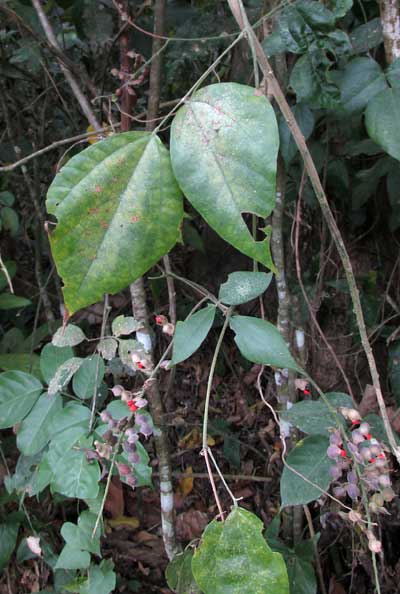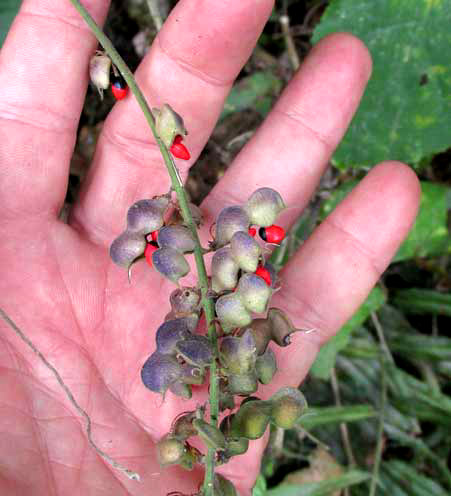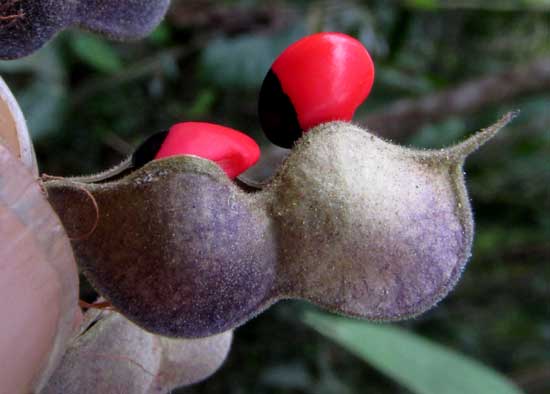Excerpts from Jim Conrad's
Naturalist Newsletter
from the May 8, 2016 Newsletter with notes from a visit in mid April to Lacanja Chansayab in the Lacandon Reserve; elevation 200m (650ft), N16.604°, W90.917°; Chiapas, MÉXICO
ROSARY SNOUTBEAN
On April 14th along small gravel backroads around Lacanja Chansayab in Chiapas's Lacandon Reserve, I thought I'd come upon a low-hanging species of vine I'd been wanting to photograph for a long time, but its flowers and fruits always have been too high for a good picture. Below, you can see the vine:

Trifoliate leaves on a twining vine immediately suggest the big Bean Family, the Fabaceae, plus the fruiting capsules even at this distance look like they're legume-type fruits opening to reveal red beans. A closer look at the legumes and their striking beans is shown below:

A much closer look at a single legume where we can see that each red bean bears a large black spot is shown below:

Now that I saw the beans better I began thinking that this wasn't the poisonous Abrus precatorius I thought it was. Up in the Yucatan that vine's tiny, red-and-black beans often ornament trails through the woods, but the beans are more spherical, looking like little red eyeballs with black pupils. These beans are more flattened and look like red Lima beans with one end dipped in black. This was something new.
The stubby little legume with only two red beans, its constriction between the two compartments, and the long, sharp "snout" at the pod's tip made the vine easy to identify as RHYNCHOSIA PRECATORIA, in English sometimes known as the Rosary Snoutbean. It owes its English ID to the fact that it's found from Texas and Arizona south through Mexico and Central America to northern South America. In Spanish it's often known as Ojo de Perico, or Parakeet Eye.
Rosary Snoutbean vine specializes in disturbed habitats like our roadside, as well as cornfields and fences enclosing pastures, but also it turns up in open woods, on dry hillsides and a variety of other environments. I read that sometimes the beans are eaten, but they're so small it's hard to imagine anyone harvesting them for that purpose. Another use is more believable -- that they look pretty on bracelets and necklaces.